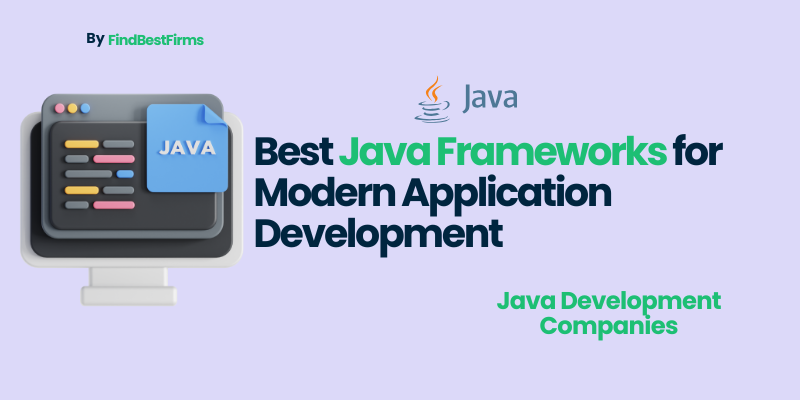Java is a programming language that has been among the most reliable and extensively utilized software languages over many decades serving as an engine of enterprise applications and mobile systems as well as web platforms on a global scale. It is an object-oriented architecture and platform-independent with good security features; hence, it is a favorite among businesses that seek to develop scalable and reliable software. Nonetheless, it can be cumbersome, tedious and non-user friendly to develop modern applications using pure Java. Java frameworks come in at this point.
Frameworks provide ready-to-use code, libraries, and best practices that reduce the effort of developers, working as scaffolding or structures around which developers create software. They allow much quicker features implementation, fewer bugs and maintainable code. In the case of companies that need to develop modern and high performing applications, the choice of the appropriate Java framework is one of the strategic choices that will alter the success of the project directly.
Frameworks enable Professional Java Developers to implement applications faster and meet the industry standards. Equally, the Java Development Companies with experience deploy the frameworks to minimize the cost of developing, enhancing the quality of the code, and creating solutions that can easily expand along with business growth.
Best Java Frameworks
1. Spring Framework
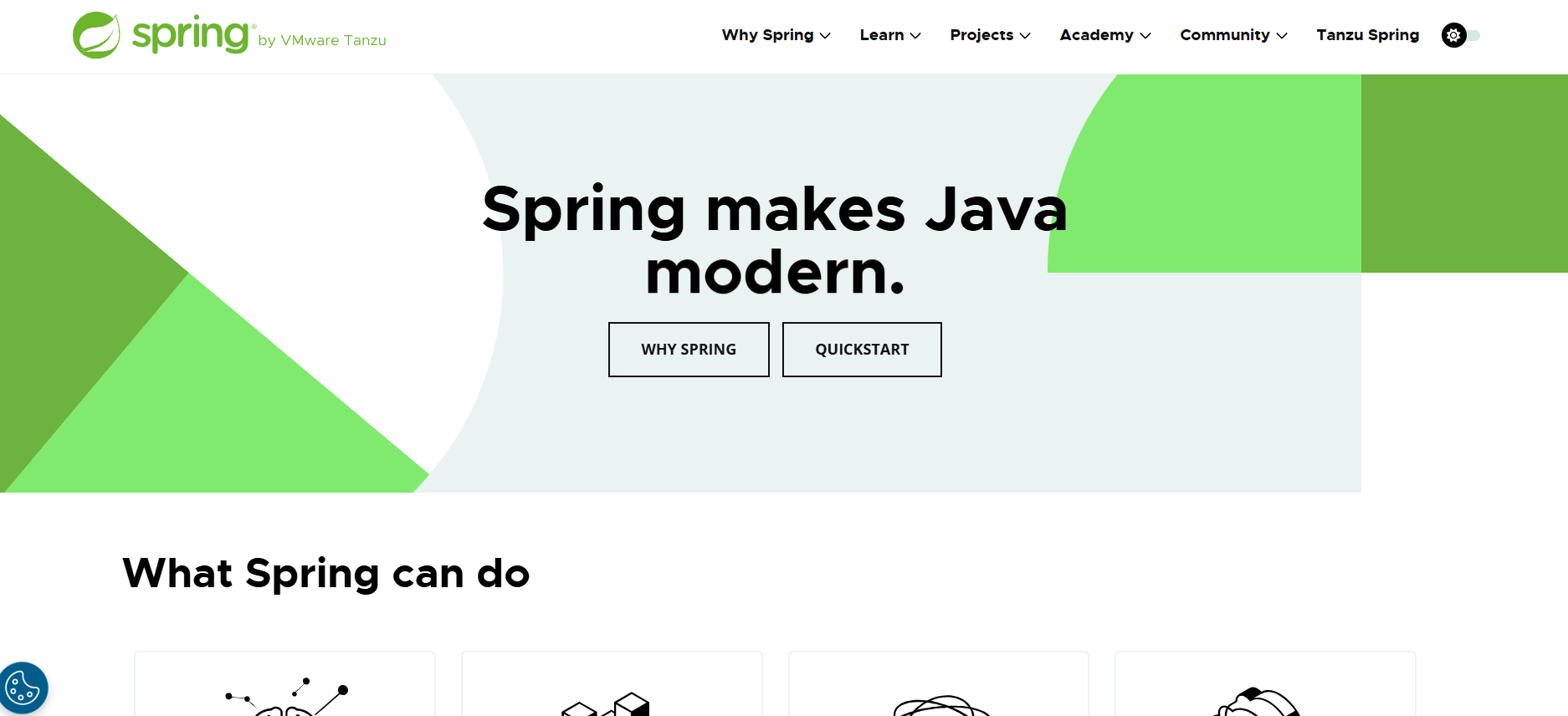
The Spring Framework is considered to be one of the strongest and versatile frameworks in the Java ecosystem. Initially created to ease the creation of enterprise-level applications, Spring is now a flexible set of solutions to web applications, microservices, and cloud-native applications. A major strength of Spring is its modular architecture that enables programmers to select and add the components that are required in particular projects. This is extremely useful in terms of businesses being able to scale applications without involving codebase complexity.
The main characteristics of spring are Dependency Injection (DI), which makes the components less coupled, and thus the developers can write cleaner and maintainable code. Spring boot makes the application configuration simple, such that one can quickly develop stand-alone, production-ready applications. It does not require complicated XML settings, loads dependencies automatically and embedded servers, thus saving on time spent in set up. Moreover, Spring MVC offers a complete model-view-controller framework to web applications, which simplifies the organization of the codes, dealing with the requests, and providing the scalable solutions.
To business entities, there is no better benefit as Spring offers. It is scalable, secure, and high-performance, which is why it is suitable in terms of enterprise applications, including banking platforms, e-commerce systems, and supply chain management solutions. Its huge community following makes it continuously updated, has many third-party integrations and has a vast amount of documentation. Numerous Java Development Companies have specialized in Spring-based development due to the flexibility, security as well as speed provided by it, which makes it the first choice when the business develops mission-critical applications.
Key Features:
- Dependency Injection (DI): Reduces tight coupling between components.
- Spring Boot: Simplifies configuration, speeds up development, and supports microservices.
- Spring MVC: Facilitates model-view-controller architecture for web applications.
Benefits for Modern Applications:
- Rapid development and deployment.
- Strong security features and authentication options.
- Large, active community for support and updates.
Use Cases: Banking applications, e-commerce platforms, and large-scale enterprise systems.
2. Hibernate
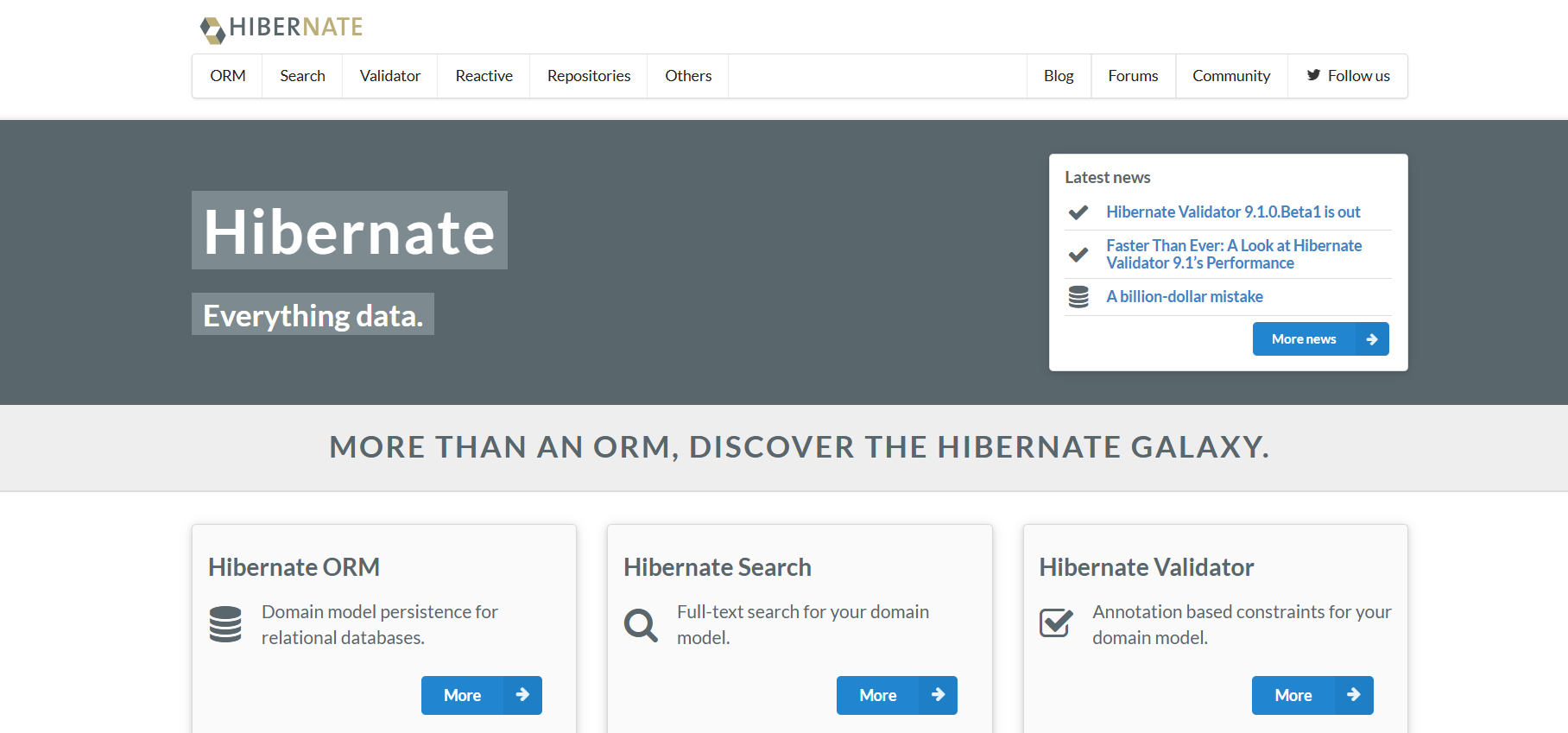
Hibernate is an effective software that intends to ease the database tasks in Java applications. It is an Object-Relational Mapping (ORM) tool that enables a developer to communicate with databases through Java objects as opposed to manually typing redundant SQLs. Through the abstraction of the database layer, Hibernate simplifies the database management aspect, increases the maintainability of the database management and increases productivity.
The major benefit of Hibernate is that it has the capability of auto-mapping Java classes to database tables and CRUD operations. It also favors such sophisticated aspects as lazy loading, caching and transaction management, which enhance application performance and scale. The writers of the query can use Hibernate Query Language (HQL) which is database agnostic i.e. the same code can be used across different relational databases without significant changes.
In the case of the businesses, Hibernate offers much in creating data-intensive applications like enterprise resource planning (ERP) systems, inventory management applications, and financial applications. Hibernate enables Java Developers to concentrate on business logic implementation instead of complicated SQLs through simplification of data persistence. Major Java Development Companies have a tendency of incorporating Hibernate in conjunction with other frameworks such as Spring to develop high performance, secure, and scaled applications capable of processing large amounts of information and maintaining its sustainability and quicker development processes.
Key Features:
- Automates data persistence and retrieval.
- Supports multiple database systems.
- Provides caching for improved performance.
Benefits for Businesses:
- Reduces development time for database-heavy applications.
- Ensures consistency between Java objects and database tables.
- Minimizes boilerplate SQL code, enhancing productivity.
Use Cases: Applications requiring complex data management, such as inventory systems or financial software.
3. Struts
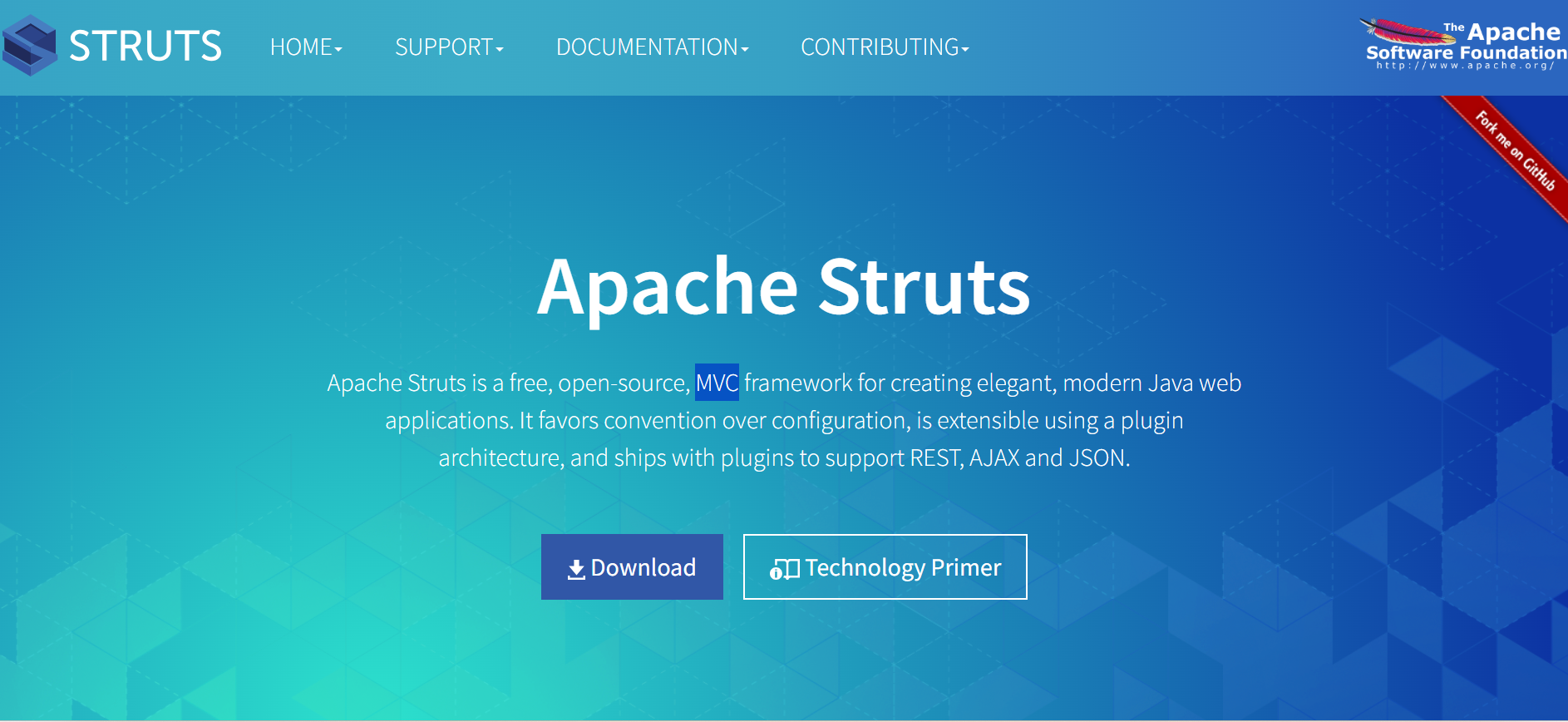
Apache Struts is an experienced member of the Java web development ecosystem, having a strong framework when it comes to scaling up web applications. Struts is based on the Model-View-Controller (MVC) architecture that divides application code and presentation layer. Such segregation makes web applications simpler to maintain, test, and scale.
Struts features a lot of features including form validation, tag libraries and simple integration with other Java technologies. It has the inbuilt tools to process user input and error messages which help to minimize the probability of application bugs and enhance user experience. Even though it is older than such a framework as Spring, Struts is also applicable to enterprise-level applications when structured processes, consistency, and maintainability matter.
Struts can prove to be of benefit to businesses that use big scale applications like government portal and corporate intranet solutions as well as online banking systems. Java Developers that are skilled in Struts are able to have highly structured and organized codes that guarantee smooth application performance. Still, Struts is still being used by many Java Development Companies to maintain their legacy systems as well as to create new applications that would need an efficient and proven MVC framework to guarantee reliability and scalability.
Key Features:
- Form validation and error handling.
- Tag libraries for dynamic web content.
- Integrates with other Java technologies easily.
Benefits:
- Simplifies web application development.
- Encourages organized and maintainable code.
- Suitable for enterprise applications requiring structured workflows.
Use Cases: Government portals, online banking systems, and corporate websites.
4. JavaServer Faces (JSF)

JavaServer Faces (JSF) is a Java framework specifically designed for building component-based user interfaces for web applications. JSF allows developers to create reusable UI components, manage event-driven interactions, and seamlessly integrate with backend services. Its emphasis on modular UI components helps in developing complex interfaces more efficiently and ensures consistency across the application.
JSF comes with built-in support for AJAX, data binding, and validation, making it easier to create dynamic and responsive web applications. Developers can focus on building rich user interfaces without worrying about low-level client-server communication. This framework is particularly useful for applications where UI consistency, maintainability, and scalability are priorities.
For enterprises, JSF is ideal for internal dashboards, HR management systems, and enterprise portals that require interactive interfaces and seamless backend integration. Java Developers skilled in JSF can deliver applications that combine usability, efficiency, and long-term maintainability. Top Java Development Companies leverage JSF for projects that demand a robust, scalable, and enterprise-grade front-end while keeping backend logic organized and efficient.
Key Features:
- Prebuilt UI components.
- Easy integration with backend services.
- Built-in support for AJAX and data binding.
Benefits:
- Rapid development of interactive web interfaces.
- Cleaner separation between UI and business logic.
- Reduces complexity for large-scale applications.
Use Cases: Enterprise dashboards, HR systems, and management portals.
5. Play Framework
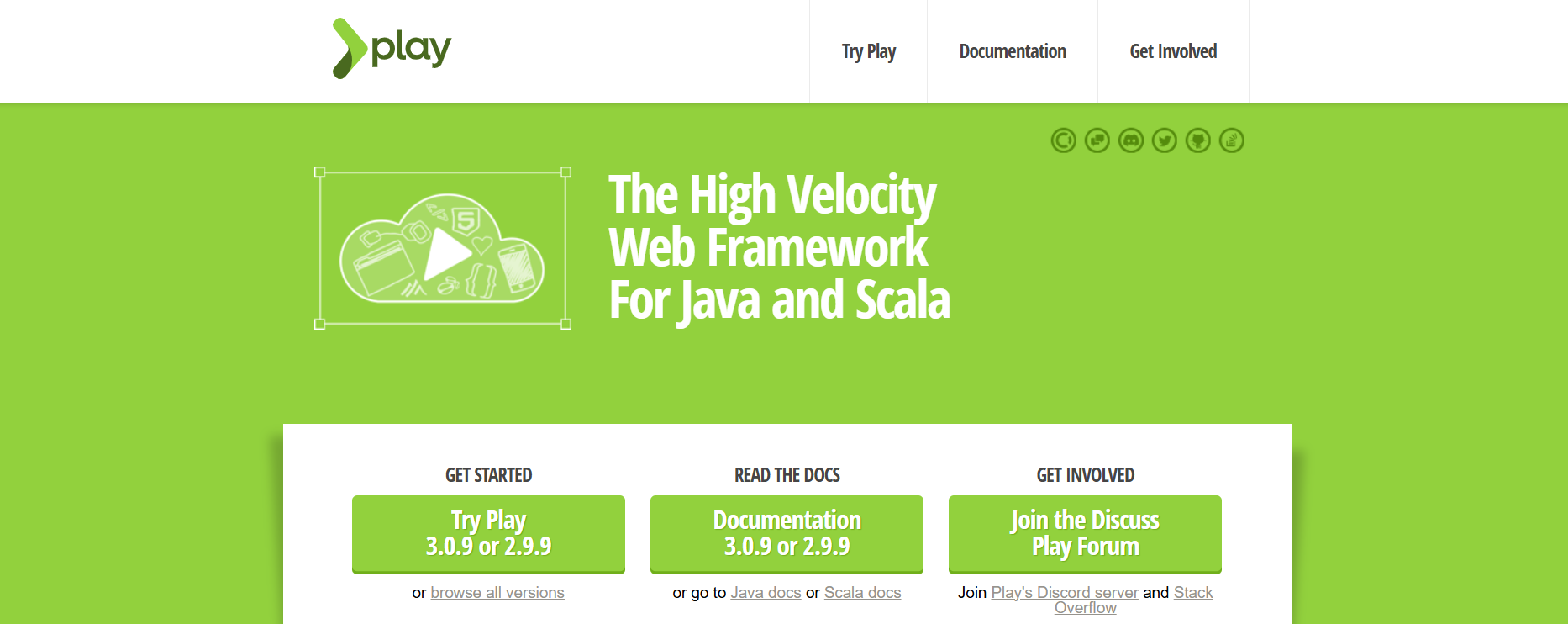
The Play Framework is a modern, lightweight Java framework built for developing reactive web applications. Unlike traditional frameworks, Play emphasizes stateless architecture and asynchronous processing, allowing applications to handle a high number of concurrent users efficiently. Its simplicity and developer-friendly environment make it ideal for startups and businesses that need to rapidly deploy web applications.
Play supports RESTful APIs, integrates seamlessly with frontend technologies like Angular and React, and offers hot code reloading, which accelerates development and testing. Developers can implement non-blocking operations, ensuring high performance even under heavy traffic. Play’s reactive programming model makes it an excellent choice for real-time applications such as social media platforms, chat applications, and analytics dashboards.
From a business perspective, Play reduces time-to-market and ensures scalability. Java Developers experienced with Play can build applications that are resilient, highly performant, and ready for future growth. Many Java Development Companies recommend Play for projects where speed, flexibility, and real-time responsiveness are key requirements.
Key Features:
- Supports RESTful APIs.
- Asynchronous processing for better performance.
- Hot reloading for faster development cycles.
Benefits:
- High performance under heavy loads.
- Rapid iteration and prototyping.
- Easy integration with frontend frameworks like Angular or React.
Use Cases: Social media platforms, messaging apps, and real-time analytics dashboards.
6. Vaadin
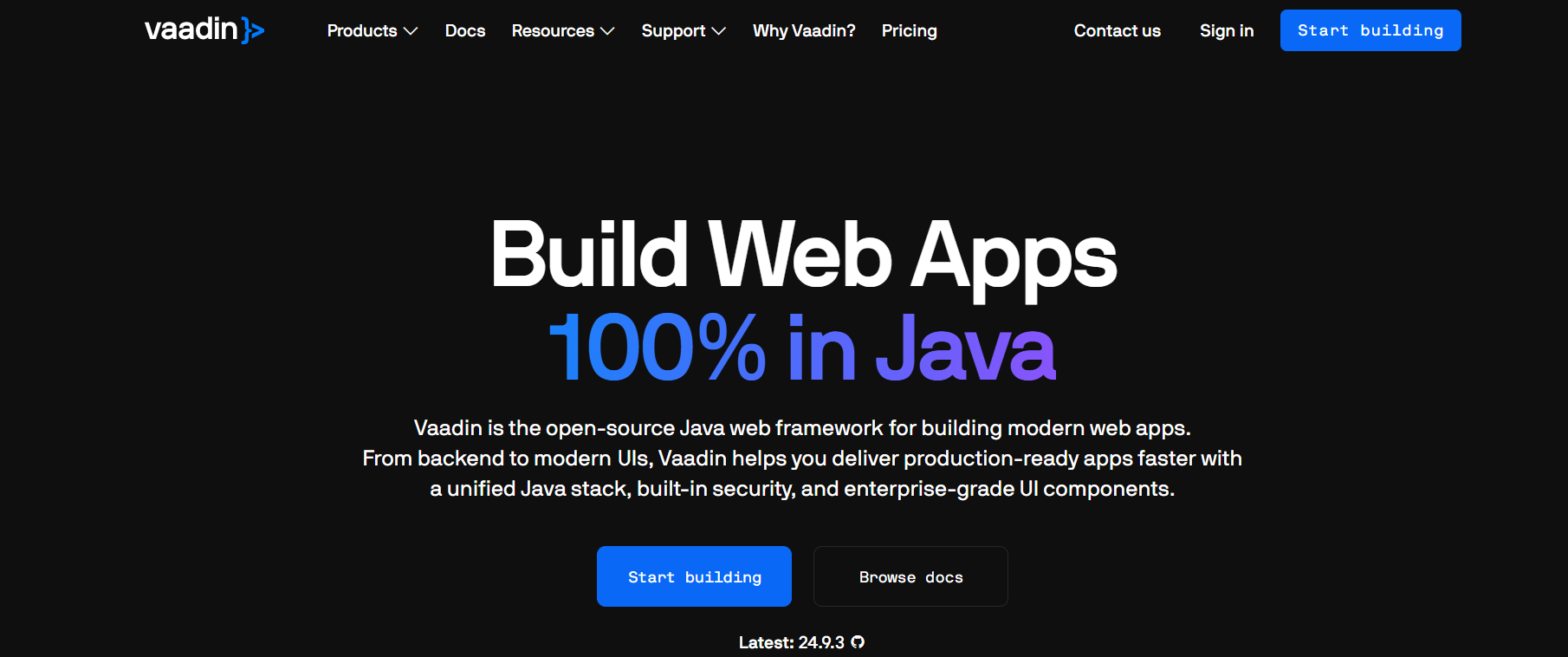
Vaadin is a Java framework focused on building modern web applications with rich user interfaces. Unlike traditional frameworks that require extensive client-side coding, Vaadin allows developers to write UI logic on the server side in Java, while the framework automatically handles rendering in the browser. This approach simplifies development and ensures seamless interaction between the frontend and backend.
Vaadin provides a wide range of prebuilt UI components, responsive layouts, and tools for rapid prototyping. Its server-driven architecture reduces the complexity of client-server communication, making it easier for developers to maintain and update applications. Businesses can use Vaadin to create internal management systems, enterprise dashboards, and workflow automation tools that require rich, interactive, and user-friendly interfaces.
Java Developers who leverage Vaadin can deliver visually appealing and high-performing applications without writing extensive JavaScript code. Leading Java Development Companies often use Vaadin for enterprise applications where consistency, maintainability, and rapid UI development are crucial. Its combination of server-side logic and rich components ensures that businesses can deploy applications efficiently while maintaining a high level of usability.
Key Features:
- Prebuilt UI components.
- Server-driven architecture for simplified client-server communication.
- Easy integration with Java EE and Spring.
Benefits:
- Speeds up UI development for enterprise applications.
- Reduces dependency on JavaScript.
- Supports responsive design for web and mobile.
Use Cases: Business dashboards, internal management systems, and workflow automation tools.
7. Micronaut
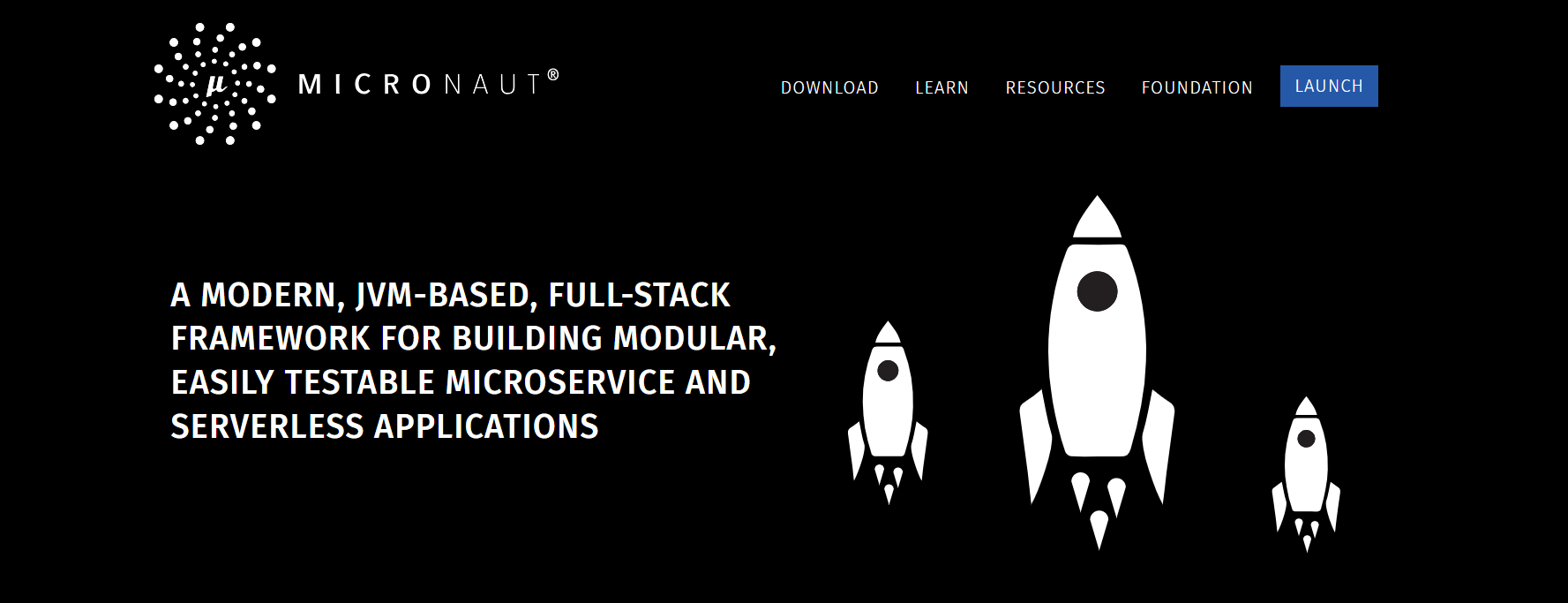
Micronaut is a modern, lightweight framework designed specifically for building microservices and serverless applications. It addresses many of the challenges faced by developers in cloud-native development, including slow startup times, high memory consumption, and complex dependency management. Micronaut’s architecture emphasizes low memory footprint, fast initialization, and compile-time dependency injection, making it ideal for microservices and cloud-based applications.
Micronaut supports reactive programming, integration with AWS Lambda, Azure Functions, and Google Cloud Platform, and allows developers to build modular, highly scalable applications. For businesses adopting microservices architecture or serverless computing, Micronaut provides a cost-effective and efficient solution, ensuring fast performance and reduced operational overhead.
Java Developers skilled in Micronaut can create lightweight, high-performance applications that scale efficiently in the cloud. Many Java Development Companies recommend Micronaut for startups and enterprises looking to modernize their architecture, reduce infrastructure costs, and deliver applications that are resilient and future-ready.
Key Features:
- Dependency injection and AOP support.
- Fast startup times.
- Cloud-native ready with support for AWS Lambda, Azure Functions, and GCP.
Benefits:
- Ideal for microservices architectures.
- Low memory footprint for cost-efficient deployments.
- Scales easily in cloud environments.
Use Cases: Microservices platforms, API gateways, and cloud-based solutions.
How to Choose the Right Java Framework
Choosing the right framework requires careful consideration of several factors. The type of project; whether it’s a web application, enterprise software, mobile app, or microservice should guide the decision. Scalability requirements, team expertise, community support, and long-term maintainability are also crucial considerations. Some frameworks are better suited for rapid development and prototyping, while others excel in enterprise-grade, high-security applications.
Summary
Java frameworks are essential for modern application development. They provide developers with the tools, structure, and best practices needed to build high-performing, secure, and scalable applications. Frameworks like Spring, Hibernate, Struts, JSF, Play, Vaadin, and Micronaut each offer unique advantages tailored to different project types and business needs.
Partnering with skilled Java Developers or a reliable Java Development Company ensures that the chosen framework is implemented correctly, reducing development time, minimizing bugs, and delivering applications that align with business objectives. By carefully selecting the right framework, businesses can accelerate innovation, enhance application performance, and stay competitive in today’s rapidly evolving digital landscape.
Investing in the right framework, coupled with professional expertise, is a long-term decision that ensures the sustainability, scalability, and success of modern applications.

